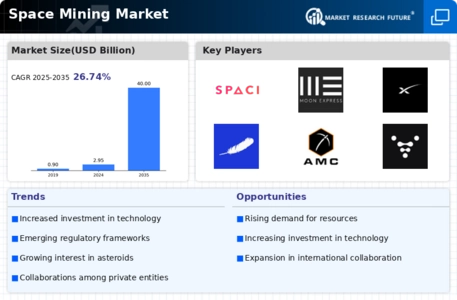-
EXECUTIVE SUMMARY
-
1.1.
-
Market Overview
-
Key Findings
-
Market Segmentation
-
1.4.
-
Competitive Landscape
-
Challenges and Opportunities
-
Future
-
Outlook
-
MARKET INTRODUCTION
-
Definition
-
Scope
- Research Objective
- Assumption
-
of the study
-
2.2.3.
-
Limitations
-
RESEARCH METHODOLOGY
-
Overview
-
Data
-
Mining
-
Secondary Research
-
Primary Research
- Primary
- Breakdown of Primary Respondents
-
Interviews and Information Gathering Process
-
Forecasting Model
-
Market Size Estimation
- Bottom-Up
- Top-Down Approach
-
Approach
-
Data Triangulation
-
3.8.
-
Validation
-
MARKET DYNAMICS
-
Overview
-
Drivers
-
Restraints
-
Opportunities
-
MARKET FACTOR ANALYSIS
-
Value chain Analysis
-
Porter's Five Forces Analysis
- Bargaining Power of Buyers
- Threat of Substitutes
- Intensity
-
5.2.1.
-
Bargaining Power of Suppliers
-
5.2.3.
-
Threat of New Entrants
-
of Rivalry
-
COVID-19 Impact Analysis
- Market Impact Analysis
- Regional Impact
- Opportunity and Threat Analysis
-
SPACE MINING MARKET, BY RESOURCE TYPE (USD BILLION)
-
Water Ice
-
Metals
-
Rare Earth Elements
-
Helium-3
-
Silicates
-
SPACE MINING MARKET, BY TECHNOLOGY (USD BILLION)
-
Robotic Mining
-
Autonomous Mining
-
Human-Piloted Missions
-
SPACE
-
MINING MARKET, BY APPLICATION (USD BILLION)
-
In-Situ Resource Utilization
-
Material Extraction
-
Fuel Production
-
SPACE MINING
-
MARKET, BY END USE (USD BILLION)
-
Space Exploration
-
Commercial
-
Space Operations
-
Scientific Research
-
SPACE MINING MARKET,
-
BY REGIONAL (USD BILLION)
-
North America
- US
-
10.1.2.
-
Canada
-
Europe
- Germany
- UK
- France
- Russia
- Italy
- Spain
- Rest
-
of Europe
-
APAC
- China
- India
- South Korea
- Malaysia
- Thailand
- Indonesia
- Rest of APAC
-
10.3.3.
-
Japan
-
South America
- Mexico
- Argentina
- Rest of South
-
10.4.1.
-
Brazil
-
America
-
MEA
- GCC Countries
- South Africa
- Rest of MEA
-
COMPETITIVE LANDSCAPE
-
Overview
-
Competitive Analysis
-
Market share Analysis
-
Major
-
Growth Strategy in the Space Mining Market
-
Competitive Benchmarking
-
Leading Players in Terms of Number of Developments in the Space Mining
-
Market
-
Key developments and growth strategies
- New Product
- Merger & Acquisitions
-
Launch/Service Deployment
-
11.7.3.
-
Joint Ventures
-
Major Players Financial Matrix
- Sales and
- Major Players R&D Expenditure. 2023
-
Operating Income
-
COMPANY PROFILES
-
Orbit Beyond
- Financial Overview
- Products Offered
- Key Developments
- SWOT
- Key Strategies
-
Analysis
-
Deep Space Industries
- Products Offered
- Key Developments
- SWOT Analysis
- Key Strategies
-
12.2.1.
-
Financial Overview
-
Ispace
- Financial Overview
- Products Offered
- Key Developments
- SWOT Analysis
- Key Strategies
-
Luxembourg
- Financial Overview
- Products Offered
- Key Developments
- SWOT Analysis
- Key Strategies
-
Space Agency
-
Moon Express
- Financial Overview
- Products
- Key Developments
- SWOT Analysis
-
Offered
-
12.5.5.
-
Key Strategies
-
SpaceX
- Financial Overview
- Key Developments
- SWOT Analysis
- Key Strategies
-
12.6.2.
-
Products Offered
-
Blue Origin
- Financial Overview
- Products Offered
- Key Developments
- SWOT
- Key Strategies
-
Analysis
-
Asteroid Mining Corporation
- Financial Overview
- Products Offered
- Key Developments
- SWOT Analysis
- Key Strategies
-
Relativity
- Financial Overview
- Products Offered
- SWOT Analysis
- Key Strategies
- Financial Overview
- Products Offered
- Key Developments
- SWOT Analysis
- Key Strategies
-
Space
-
12.9.3.
-
Key Developments
-
12.10.
-
Rocket Lab
-
NASA
- Financial Overview
- Products Offered
- Key Developments
- SWOT Analysis
- Key
-
Strategies
-
Offworld
- Financial Overview
- Key Developments
- SWOT Analysis
- Key Strategies
-
12.12.2.
-
Products Offered
-
Asteroid Grand Challenge
- Financial
- Products Offered
- Key Developments
- Key Strategies
-
Overview
-
12.13.4.
-
SWOT Analysis
-
Planetary Resources
- Financial Overview
- Products Offered
- Key
- SWOT Analysis
- Key Strategies
- Financial Overview
- Products Offered
- Key Developments
- SWOT Analysis
- Key
-
Developments
-
12.15.
-
Space Resources
-
Strategies
-
APPENDIX
-
References
-
Related Reports
-
LIST OF TABLES
-
\r\nTABLE 1. LIST OF ASSUMPTIONS
-
TABLE 2.
-
NORTH AMERICA SPACE MINING MARKET SIZE ESTIMATES & FORECAST, BY RESOURCE TYPE,
-
NORTH AMERICA SPACE MINING MARKET SIZE ESTIMATES
-
& FORECAST, BY TECHNOLOGY, 2019-2035 (USD BILLIONS)
-
NORTH AMERICA
-
SPACE MINING MARKET SIZE ESTIMATES & FORECAST, BY APPLICATION, 2019-2035 (USD
-
BILLIONS)
-
NORTH AMERICA SPACE MINING MARKET SIZE ESTIMATES &
-
FORECAST, BY END USE, 2019-2035 (USD BILLIONS)
-
NORTH AMERICA SPACE
-
MINING MARKET SIZE ESTIMATES & FORECAST, BY REGIONAL, 2019-2035 (USD BILLIONS)
-
US SPACE MINING MARKET SIZE ESTIMATES & FORECAST, BY RESOURCE
-
TYPE, 2019-2035 (USD BILLIONS)
-
US SPACE MINING MARKET SIZE ESTIMATES
-
& FORECAST, BY TECHNOLOGY, 2019-2035 (USD BILLIONS)
-
US SPACE
-
MINING MARKET SIZE ESTIMATES & FORECAST, BY APPLICATION, 2019-2035 (USD BILLIONS)
-
US SPACE MINING MARKET SIZE ESTIMATES & FORECAST, BY END USE,
-
US SPACE MINING MARKET SIZE ESTIMATES &
-
FORECAST, BY REGIONAL, 2019-2035 (USD BILLIONS)
-
CANADA SPACE MINING
-
MARKET SIZE ESTIMATES & FORECAST, BY RESOURCE TYPE, 2019-2035 (USD BILLIONS)
-
CANADA SPACE MINING MARKET SIZE ESTIMATES & FORECAST, BY TECHNOLOGY,
-
CANADA SPACE MINING MARKET SIZE ESTIMATES
-
& FORECAST, BY APPLICATION, 2019-2035 (USD BILLIONS)
-
CANADA
-
SPACE MINING MARKET SIZE ESTIMATES & FORECAST, BY END USE, 2019-2035 (USD BILLIONS)
-
CANADA SPACE MINING MARKET SIZE ESTIMATES & FORECAST, BY REGIONAL,
-
EUROPE SPACE MINING MARKET SIZE ESTIMATES
-
& FORECAST, BY RESOURCE TYPE, 2019-2035 (USD BILLIONS)
-
EUROPE
-
SPACE MINING MARKET SIZE ESTIMATES & FORECAST, BY TECHNOLOGY, 2019-2035 (USD
-
BILLIONS)
-
EUROPE SPACE MINING MARKET SIZE ESTIMATES & FORECAST,
-
BY APPLICATION, 2019-2035 (USD BILLIONS)
-
EUROPE SPACE MINING MARKET
-
SIZE ESTIMATES & FORECAST, BY END USE, 2019-2035 (USD BILLIONS)
-
TABLE
-
EUROPE SPACE MINING MARKET SIZE ESTIMATES & FORECAST, BY REGIONAL, 2019-2035
-
(USD BILLIONS)
-
GERMANY SPACE MINING MARKET SIZE ESTIMATES &
-
FORECAST, BY RESOURCE TYPE, 2019-2035 (USD BILLIONS)
-
GERMANY SPACE
-
MINING MARKET SIZE ESTIMATES & FORECAST, BY TECHNOLOGY, 2019-2035 (USD BILLIONS)
-
GERMANY SPACE MINING MARKET SIZE ESTIMATES & FORECAST, BY APPLICATION,
-
GERMANY SPACE MINING MARKET SIZE ESTIMATES
-
& FORECAST, BY END USE, 2019-2035 (USD BILLIONS)
-
GERMANY SPACE
-
MINING MARKET SIZE ESTIMATES & FORECAST, BY REGIONAL, 2019-2035 (USD BILLIONS)
-
UK SPACE MINING MARKET SIZE ESTIMATES & FORECAST, BY RESOURCE
-
TYPE, 2019-2035 (USD BILLIONS)
-
UK SPACE MINING MARKET SIZE ESTIMATES
-
& FORECAST, BY TECHNOLOGY, 2019-2035 (USD BILLIONS)
-
UK SPACE
-
MINING MARKET SIZE ESTIMATES & FORECAST, BY APPLICATION, 2019-2035 (USD BILLIONS)
-
UK SPACE MINING MARKET SIZE ESTIMATES & FORECAST, BY END USE,
-
UK SPACE MINING MARKET SIZE ESTIMATES &
-
FORECAST, BY REGIONAL, 2019-2035 (USD BILLIONS)
-
FRANCE SPACE MINING
-
MARKET SIZE ESTIMATES & FORECAST, BY RESOURCE TYPE, 2019-2035 (USD BILLIONS)
-
FRANCE SPACE MINING MARKET SIZE ESTIMATES & FORECAST, BY TECHNOLOGY,
-
FRANCE SPACE MINING MARKET SIZE ESTIMATES
-
& FORECAST, BY APPLICATION, 2019-2035 (USD BILLIONS)
-
FRANCE
-
SPACE MINING MARKET SIZE ESTIMATES & FORECAST, BY END USE, 2019-2035 (USD BILLIONS)
-
FRANCE SPACE MINING MARKET SIZE ESTIMATES & FORECAST, BY REGIONAL,
-
RUSSIA SPACE MINING MARKET SIZE ESTIMATES
-
& FORECAST, BY RESOURCE TYPE, 2019-2035 (USD BILLIONS)
-
RUSSIA
-
SPACE MINING MARKET SIZE ESTIMATES & FORECAST, BY TECHNOLOGY, 2019-2035 (USD
-
BILLIONS)
-
RUSSIA SPACE MINING MARKET SIZE ESTIMATES & FORECAST,
-
BY APPLICATION, 2019-2035 (USD BILLIONS)
-
RUSSIA SPACE MINING MARKET
-
SIZE ESTIMATES & FORECAST, BY END USE, 2019-2035 (USD BILLIONS)
-
TABLE
-
RUSSIA SPACE MINING MARKET SIZE ESTIMATES & FORECAST, BY REGIONAL, 2019-2035
-
(USD BILLIONS)
-
ITALY SPACE MINING MARKET SIZE ESTIMATES & FORECAST,
-
BY RESOURCE TYPE, 2019-2035 (USD BILLIONS)
-
ITALY SPACE MINING MARKET
-
SIZE ESTIMATES & FORECAST, BY TECHNOLOGY, 2019-2035 (USD BILLIONS)
-
TABLE
-
ITALY SPACE MINING MARKET SIZE ESTIMATES & FORECAST, BY APPLICATION, 2019-2035
-
(USD BILLIONS)
-
ITALY SPACE MINING MARKET SIZE ESTIMATES & FORECAST,
-
BY END USE, 2019-2035 (USD BILLIONS)
-
ITALY SPACE MINING MARKET SIZE
-
ESTIMATES & FORECAST, BY REGIONAL, 2019-2035 (USD BILLIONS)
-
TABLE 47.
-
SPAIN SPACE MINING MARKET SIZE ESTIMATES & FORECAST, BY RESOURCE TYPE, 2019-2035
-
(USD BILLIONS)
-
SPAIN SPACE MINING MARKET SIZE ESTIMATES & FORECAST,
-
BY TECHNOLOGY, 2019-2035 (USD BILLIONS)
-
SPAIN SPACE MINING MARKET
-
SIZE ESTIMATES & FORECAST, BY APPLICATION, 2019-2035 (USD BILLIONS)
-
TABLE
-
SPAIN SPACE MINING MARKET SIZE ESTIMATES & FORECAST, BY END USE, 2019-2035
-
(USD BILLIONS)
-
SPAIN SPACE MINING MARKET SIZE ESTIMATES & FORECAST,
-
BY REGIONAL, 2019-2035 (USD BILLIONS)
-
REST OF EUROPE SPACE MINING
-
MARKET SIZE ESTIMATES & FORECAST, BY RESOURCE TYPE, 2019-2035 (USD BILLIONS)
-
REST OF EUROPE SPACE MINING MARKET SIZE ESTIMATES & FORECAST,
-
BY TECHNOLOGY, 2019-2035 (USD BILLIONS)
-
REST OF EUROPE SPACE MINING
-
MARKET SIZE ESTIMATES & FORECAST, BY APPLICATION, 2019-2035 (USD BILLIONS)
-
REST OF EUROPE SPACE MINING MARKET SIZE ESTIMATES & FORECAST, BY
-
END USE, 2019-2035 (USD BILLIONS)
-
REST OF EUROPE SPACE MINING MARKET
-
SIZE ESTIMATES & FORECAST, BY REGIONAL, 2019-2035 (USD BILLIONS)
-
TABLE
-
APAC SPACE MINING MARKET SIZE ESTIMATES & FORECAST, BY RESOURCE TYPE, 2019-2035
-
(USD BILLIONS)
-
APAC SPACE MINING MARKET SIZE ESTIMATES & FORECAST,
-
BY TECHNOLOGY, 2019-2035 (USD BILLIONS)
-
APAC SPACE MINING MARKET
-
SIZE ESTIMATES & FORECAST, BY APPLICATION, 2019-2035 (USD BILLIONS)
-
TABLE
-
APAC SPACE MINING MARKET SIZE ESTIMATES & FORECAST, BY END USE, 2019-2035
-
(USD BILLIONS)
-
APAC SPACE MINING MARKET SIZE ESTIMATES & FORECAST,
-
BY REGIONAL, 2019-2035 (USD BILLIONS)
-
CHINA SPACE MINING MARKET
-
SIZE ESTIMATES & FORECAST, BY RESOURCE TYPE, 2019-2035 (USD BILLIONS)
-
TABLE
-
CHINA SPACE MINING MARKET SIZE ESTIMATES & FORECAST, BY TECHNOLOGY, 2019-2035
-
(USD BILLIONS)
-
CHINA SPACE MINING MARKET SIZE ESTIMATES & FORECAST,
-
BY APPLICATION, 2019-2035 (USD BILLIONS)
-
CHINA SPACE MINING MARKET
-
SIZE ESTIMATES & FORECAST, BY END USE, 2019-2035 (USD BILLIONS)
-
TABLE
-
CHINA SPACE MINING MARKET SIZE ESTIMATES & FORECAST, BY REGIONAL, 2019-2035
-
(USD BILLIONS)
-
INDIA SPACE MINING MARKET SIZE ESTIMATES & FORECAST,
-
BY RESOURCE TYPE, 2019-2035 (USD BILLIONS)
-
INDIA SPACE MINING MARKET
-
SIZE ESTIMATES & FORECAST, BY TECHNOLOGY, 2019-2035 (USD BILLIONS)
-
TABLE
-
INDIA SPACE MINING MARKET SIZE ESTIMATES & FORECAST, BY APPLICATION, 2019-2035
-
(USD BILLIONS)
-
INDIA SPACE MINING MARKET SIZE ESTIMATES & FORECAST,
-
BY END USE, 2019-2035 (USD BILLIONS)
-
INDIA SPACE MINING MARKET SIZE
-
ESTIMATES & FORECAST, BY REGIONAL, 2019-2035 (USD BILLIONS)
-
TABLE 72.
-
JAPAN SPACE MINING MARKET SIZE ESTIMATES & FORECAST, BY RESOURCE TYPE, 2019-2035
-
(USD BILLIONS)
-
JAPAN SPACE MINING MARKET SIZE ESTIMATES & FORECAST,
-
BY TECHNOLOGY, 2019-2035 (USD BILLIONS)
-
JAPAN SPACE MINING MARKET
-
SIZE ESTIMATES & FORECAST, BY APPLICATION, 2019-2035 (USD BILLIONS)
-
TABLE
-
JAPAN SPACE MINING MARKET SIZE ESTIMATES & FORECAST, BY END USE, 2019-2035
-
(USD BILLIONS)
-
JAPAN SPACE MINING MARKET SIZE ESTIMATES & FORECAST,
-
BY REGIONAL, 2019-2035 (USD BILLIONS)
-
SOUTH KOREA SPACE MINING MARKET
-
SIZE ESTIMATES & FORECAST, BY RESOURCE TYPE, 2019-2035 (USD BILLIONS)
-
TABLE
-
SOUTH KOREA SPACE MINING MARKET SIZE ESTIMATES & FORECAST, BY TECHNOLOGY,
-
SOUTH KOREA SPACE MINING MARKET SIZE ESTIMATES
-
& FORECAST, BY APPLICATION, 2019-2035 (USD BILLIONS)
-
SOUTH KOREA
-
SPACE MINING MARKET SIZE ESTIMATES & FORECAST, BY END USE, 2019-2035 (USD BILLIONS)
-
SOUTH KOREA SPACE MINING MARKET SIZE ESTIMATES & FORECAST, BY
-
REGIONAL, 2019-2035 (USD BILLIONS)
-
MALAYSIA SPACE MINING MARKET
-
SIZE ESTIMATES & FORECAST, BY RESOURCE TYPE, 2019-2035 (USD BILLIONS)
-
TABLE
-
MALAYSIA SPACE MINING MARKET SIZE ESTIMATES & FORECAST, BY TECHNOLOGY, 2019-2035
-
(USD BILLIONS)
-
MALAYSIA SPACE MINING MARKET SIZE ESTIMATES &
-
FORECAST, BY APPLICATION, 2019-2035 (USD BILLIONS)
-
MALAYSIA SPACE
-
MINING MARKET SIZE ESTIMATES & FORECAST, BY END USE, 2019-2035 (USD BILLIONS)
-
MALAYSIA SPACE MINING MARKET SIZE ESTIMATES & FORECAST, BY REGIONAL,
-
THAILAND SPACE MINING MARKET SIZE ESTIMATES
-
& FORECAST, BY RESOURCE TYPE, 2019-2035 (USD BILLIONS)
-
THAILAND
-
SPACE MINING MARKET SIZE ESTIMATES & FORECAST, BY TECHNOLOGY, 2019-2035 (USD
-
BILLIONS)
-
THAILAND SPACE MINING MARKET SIZE ESTIMATES & FORECAST,
-
BY APPLICATION, 2019-2035 (USD BILLIONS)
-
THAILAND SPACE MINING MARKET
-
SIZE ESTIMATES & FORECAST, BY END USE, 2019-2035 (USD BILLIONS)
-
TABLE
-
THAILAND SPACE MINING MARKET SIZE ESTIMATES & FORECAST, BY REGIONAL, 2019-2035
-
(USD BILLIONS)
-
INDONESIA SPACE MINING MARKET SIZE ESTIMATES &
-
FORECAST, BY RESOURCE TYPE, 2019-2035 (USD BILLIONS)
-
INDONESIA SPACE
-
MINING MARKET SIZE ESTIMATES & FORECAST, BY TECHNOLOGY, 2019-2035 (USD BILLIONS)
-
INDONESIA SPACE MINING MARKET SIZE ESTIMATES & FORECAST, BY
-
APPLICATION, 2019-2035 (USD BILLIONS)
-
INDONESIA SPACE MINING MARKET
-
SIZE ESTIMATES & FORECAST, BY END USE, 2019-2035 (USD BILLIONS)
-
TABLE
-
INDONESIA SPACE MINING MARKET SIZE ESTIMATES & FORECAST, BY REGIONAL, 2019-2035
-
(USD BILLIONS)
-
REST OF APAC SPACE MINING MARKET SIZE ESTIMATES &
-
FORECAST, BY RESOURCE TYPE, 2019-2035 (USD BILLIONS)
-
REST OF APAC
-
SPACE MINING MARKET SIZE ESTIMATES & FORECAST, BY TECHNOLOGY, 2019-2035 (USD
-
BILLIONS)
-
REST OF APAC SPACE MINING MARKET SIZE ESTIMATES &
-
FORECAST, BY APPLICATION, 2019-2035 (USD BILLIONS)
-
REST OF APAC
-
SPACE MINING MARKET SIZE ESTIMATES & FORECAST, BY END USE, 2019-2035 (USD BILLIONS)
-
REST OF APAC SPACE MINING MARKET SIZE ESTIMATES & FORECAST,
-
BY REGIONAL, 2019-2035 (USD BILLIONS)
-
SOUTH AMERICA SPACE MINING
-
MARKET SIZE ESTIMATES & FORECAST, BY RESOURCE TYPE, 2019-2035 (USD BILLIONS)
-
SOUTH AMERICA SPACE MINING MARKET SIZE ESTIMATES & FORECAST,
-
BY TECHNOLOGY, 2019-2035 (USD BILLIONS)
-
SOUTH AMERICA SPACE MINING
-
MARKET SIZE ESTIMATES & FORECAST, BY APPLICATION, 2019-2035 (USD BILLIONS)
-
SOUTH AMERICA SPACE MINING MARKET SIZE ESTIMATES & FORECAST, BY
-
END USE, 2019-2035 (USD BILLIONS)
-
SOUTH AMERICA SPACE MINING MARKET
-
SIZE ESTIMATES & FORECAST, BY REGIONAL, 2019-2035 (USD BILLIONS)
-
TABLE
-
BRAZIL SPACE MINING MARKET SIZE ESTIMATES & FORECAST, BY RESOURCE TYPE,
-
BRAZIL SPACE MINING MARKET SIZE ESTIMATES
-
& FORECAST, BY TECHNOLOGY, 2019-2035 (USD BILLIONS)
-
BRAZIL
-
SPACE MINING MARKET SIZE ESTIMATES & FORECAST, BY APPLICATION, 2019-2035 (USD
-
BILLIONS)
-
BRAZIL SPACE MINING MARKET SIZE ESTIMATES & FORECAST,
-
BY END USE, 2019-2035 (USD BILLIONS)
-
BRAZIL SPACE MINING MARKET
-
SIZE ESTIMATES & FORECAST, BY REGIONAL, 2019-2035 (USD BILLIONS)
-
TABLE
-
MEXICO SPACE MINING MARKET SIZE ESTIMATES & FORECAST, BY RESOURCE TYPE,
-
MEXICO SPACE MINING MARKET SIZE ESTIMATES
-
& FORECAST, BY TECHNOLOGY, 2019-2035 (USD BILLIONS)
-
MEXICO
-
SPACE MINING MARKET SIZE ESTIMATES & FORECAST, BY APPLICATION, 2019-2035 (USD
-
BILLIONS)
-
MEXICO SPACE MINING MARKET SIZE ESTIMATES & FORECAST,
-
BY END USE, 2019-2035 (USD BILLIONS)
-
MEXICO SPACE MINING MARKET
-
SIZE ESTIMATES & FORECAST, BY REGIONAL, 2019-2035 (USD BILLIONS)
-
TABLE
-
ARGENTINA SPACE MINING MARKET SIZE ESTIMATES & FORECAST, BY RESOURCE TYPE,
-
ARGENTINA SPACE MINING MARKET SIZE ESTIMATES
-
& FORECAST, BY TECHNOLOGY, 2019-2035 (USD BILLIONS)
-
ARGENTINA
-
SPACE MINING MARKET SIZE ESTIMATES & FORECAST, BY APPLICATION, 2019-2035 (USD
-
BILLIONS)
-
ARGENTINA SPACE MINING MARKET SIZE ESTIMATES & FORECAST,
-
BY END USE, 2019-2035 (USD BILLIONS)
-
ARGENTINA SPACE MINING MARKET
-
SIZE ESTIMATES & FORECAST, BY REGIONAL, 2019-2035 (USD BILLIONS)
-
TABLE
-
REST OF SOUTH AMERICA SPACE MINING MARKET SIZE ESTIMATES & FORECAST, BY
-
RESOURCE TYPE, 2019-2035 (USD BILLIONS)
-
REST OF SOUTH AMERICA SPACE
-
MINING MARKET SIZE ESTIMATES & FORECAST, BY TECHNOLOGY, 2019-2035 (USD BILLIONS)
-
REST OF SOUTH AMERICA SPACE MINING MARKET SIZE ESTIMATES &
-
FORECAST, BY APPLICATION, 2019-2035 (USD BILLIONS)
-
REST OF SOUTH
-
AMERICA SPACE MINING MARKET SIZE ESTIMATES & FORECAST, BY END USE, 2019-2035
-
(USD BILLIONS)
-
REST OF SOUTH AMERICA SPACE MINING MARKET SIZE ESTIMATES
-
& FORECAST, BY REGIONAL, 2019-2035 (USD BILLIONS)
-
MEA SPACE
-
MINING MARKET SIZE ESTIMATES & FORECAST, BY RESOURCE TYPE, 2019-2035 (USD BILLIONS)
-
MEA SPACE MINING MARKET SIZE ESTIMATES & FORECAST, BY TECHNOLOGY,
-
MEA SPACE MINING MARKET SIZE ESTIMATES
-
& FORECAST, BY APPLICATION, 2019-2035 (USD BILLIONS)
-
MEA SPACE
-
MINING MARKET SIZE ESTIMATES & FORECAST, BY END USE, 2019-2035 (USD BILLIONS)
-
MEA SPACE MINING MARKET SIZE ESTIMATES & FORECAST, BY REGIONAL,
-
GCC COUNTRIES SPACE MINING MARKET SIZE
-
ESTIMATES & FORECAST, BY RESOURCE TYPE, 2019-2035 (USD BILLIONS)
-
TABLE
-
GCC COUNTRIES SPACE MINING MARKET SIZE ESTIMATES & FORECAST, BY TECHNOLOGY,
-
GCC COUNTRIES SPACE MINING MARKET SIZE
-
ESTIMATES & FORECAST, BY APPLICATION, 2019-2035 (USD BILLIONS)
-
TABLE 135.
-
GCC COUNTRIES SPACE MINING MARKET SIZE ESTIMATES & FORECAST, BY END USE, 2019-2035
-
(USD BILLIONS)
-
GCC COUNTRIES SPACE MINING MARKET SIZE ESTIMATES
-
& FORECAST, BY REGIONAL, 2019-2035 (USD BILLIONS)
-
SOUTH AFRICA
-
SPACE MINING MARKET SIZE ESTIMATES & FORECAST, BY RESOURCE TYPE, 2019-2035 (USD
-
BILLIONS)
-
SOUTH AFRICA SPACE MINING MARKET SIZE ESTIMATES &
-
FORECAST, BY TECHNOLOGY, 2019-2035 (USD BILLIONS)
-
SOUTH AFRICA
-
SPACE MINING MARKET SIZE ESTIMATES & FORECAST, BY APPLICATION, 2019-2035 (USD
-
BILLIONS)
-
SOUTH AFRICA SPACE MINING MARKET SIZE ESTIMATES &
-
FORECAST, BY END USE, 2019-2035 (USD BILLIONS)
-
SOUTH AFRICA SPACE
-
MINING MARKET SIZE ESTIMATES & FORECAST, BY REGIONAL, 2019-2035 (USD BILLIONS)
-
REST OF MEA SPACE MINING MARKET SIZE ESTIMATES & FORECAST,
-
BY RESOURCE TYPE, 2019-2035 (USD BILLIONS)
-
REST OF MEA SPACE MINING
-
MARKET SIZE ESTIMATES & FORECAST, BY TECHNOLOGY, 2019-2035 (USD BILLIONS)
-
REST OF MEA SPACE MINING MARKET SIZE ESTIMATES & FORECAST, BY APPLICATION,
-
REST OF MEA SPACE MINING MARKET SIZE ESTIMATES
-
& FORECAST, BY END USE, 2019-2035 (USD BILLIONS)
-
REST OF MEA
-
SPACE MINING MARKET SIZE ESTIMATES & FORECAST, BY REGIONAL, 2019-2035 (USD BILLIONS)
-
PRODUCT LAUNCH/PRODUCT DEVELOPMENT/APPROVAL
-
ACQUISITION/PARTNERSHIP
-
\r\n
-
LIST OF FIGURES
-
\r\nFIGURE 1. MARKET SYNOPSIS
-
NORTH AMERICA
-
SPACE MINING MARKET ANALYSIS
-
US SPACE MINING MARKET ANALYSIS BY
-
RESOURCE TYPE
-
US SPACE MINING MARKET ANALYSIS BY TECHNOLOGY
-
US SPACE MINING MARKET ANALYSIS BY APPLICATION
-
US SPACE
-
MINING MARKET ANALYSIS BY END USE
-
US SPACE MINING MARKET ANALYSIS
-
BY REGIONAL
-
CANADA SPACE MINING MARKET ANALYSIS BY RESOURCE TYPE
-
CANADA SPACE MINING MARKET ANALYSIS BY TECHNOLOGY
-
FIGURE 10.
-
CANADA SPACE MINING MARKET ANALYSIS BY APPLICATION
-
CANADA SPACE
-
MINING MARKET ANALYSIS BY END USE
-
CANADA SPACE MINING MARKET ANALYSIS
-
BY REGIONAL
-
EUROPE SPACE MINING MARKET ANALYSIS
-
FIGURE 14.
-
GERMANY SPACE MINING MARKET ANALYSIS BY RESOURCE TYPE
-
GERMANY SPACE
-
MINING MARKET ANALYSIS BY TECHNOLOGY
-
GERMANY SPACE MINING MARKET
-
ANALYSIS BY APPLICATION
-
GERMANY SPACE MINING MARKET ANALYSIS BY
-
END USE
-
GERMANY SPACE MINING MARKET ANALYSIS BY REGIONAL
-
FIGURE
-
UK SPACE MINING MARKET ANALYSIS BY RESOURCE TYPE
-
UK SPACE MINING
-
MARKET ANALYSIS BY TECHNOLOGY
-
UK SPACE MINING MARKET ANALYSIS BY
-
APPLICATION
-
UK SPACE MINING MARKET ANALYSIS BY END USE
-
FIGURE
-
UK SPACE MINING MARKET ANALYSIS BY REGIONAL
-
FRANCE SPACE MINING
-
MARKET ANALYSIS BY RESOURCE TYPE
-
FRANCE SPACE MINING MARKET ANALYSIS
-
BY TECHNOLOGY
-
FRANCE SPACE MINING MARKET ANALYSIS BY APPLICATION
-
FRANCE SPACE MINING MARKET ANALYSIS BY END USE
-
FIGURE 28.
-
FRANCE SPACE MINING MARKET ANALYSIS BY REGIONAL
-
RUSSIA SPACE MINING
-
MARKET ANALYSIS BY RESOURCE TYPE
-
RUSSIA SPACE MINING MARKET ANALYSIS
-
BY TECHNOLOGY
-
RUSSIA SPACE MINING MARKET ANALYSIS BY APPLICATION
-
RUSSIA SPACE MINING MARKET ANALYSIS BY END USE
-
FIGURE 33.
-
RUSSIA SPACE MINING MARKET ANALYSIS BY REGIONAL
-
ITALY SPACE MINING
-
MARKET ANALYSIS BY RESOURCE TYPE
-
ITALY SPACE MINING MARKET ANALYSIS
-
BY TECHNOLOGY
-
ITALY SPACE MINING MARKET ANALYSIS BY APPLICATION
-
ITALY SPACE MINING MARKET ANALYSIS BY END USE
-
FIGURE 38.
-
ITALY SPACE MINING MARKET ANALYSIS BY REGIONAL
-
SPAIN SPACE MINING
-
MARKET ANALYSIS BY RESOURCE TYPE
-
SPAIN SPACE MINING MARKET ANALYSIS
-
BY TECHNOLOGY
-
SPAIN SPACE MINING MARKET ANALYSIS BY APPLICATION
-
SPAIN SPACE MINING MARKET ANALYSIS BY END USE
-
FIGURE 43.
-
SPAIN SPACE MINING MARKET ANALYSIS BY REGIONAL
-
REST OF EUROPE SPACE
-
MINING MARKET ANALYSIS BY RESOURCE TYPE
-
REST OF EUROPE SPACE MINING
-
MARKET ANALYSIS BY TECHNOLOGY
-
REST OF EUROPE SPACE MINING MARKET
-
ANALYSIS BY APPLICATION
-
REST OF EUROPE SPACE MINING MARKET ANALYSIS
-
BY END USE
-
REST OF EUROPE SPACE MINING MARKET ANALYSIS BY REGIONAL
-
APAC SPACE MINING MARKET ANALYSIS
-
CHINA SPACE
-
MINING MARKET ANALYSIS BY RESOURCE TYPE
-
CHINA SPACE MINING MARKET
-
ANALYSIS BY TECHNOLOGY
-
CHINA SPACE MINING MARKET ANALYSIS BY APPLICATION
-
CHINA SPACE MINING MARKET ANALYSIS BY END USE
-
FIGURE 54.
-
CHINA SPACE MINING MARKET ANALYSIS BY REGIONAL
-
INDIA SPACE MINING
-
MARKET ANALYSIS BY RESOURCE TYPE
-
INDIA SPACE MINING MARKET ANALYSIS
-
BY TECHNOLOGY
-
INDIA SPACE MINING MARKET ANALYSIS BY APPLICATION
-
INDIA SPACE MINING MARKET ANALYSIS BY END USE
-
FIGURE 59.
-
INDIA SPACE MINING MARKET ANALYSIS BY REGIONAL
-
JAPAN SPACE MINING
-
MARKET ANALYSIS BY RESOURCE TYPE
-
JAPAN SPACE MINING MARKET ANALYSIS
-
BY TECHNOLOGY
-
JAPAN SPACE MINING MARKET ANALYSIS BY APPLICATION
-
JAPAN SPACE MINING MARKET ANALYSIS BY END USE
-
FIGURE 64.
-
JAPAN SPACE MINING MARKET ANALYSIS BY REGIONAL
-
SOUTH KOREA SPACE
-
MINING MARKET ANALYSIS BY RESOURCE TYPE
-
SOUTH KOREA SPACE MINING
-
MARKET ANALYSIS BY TECHNOLOGY
-
SOUTH KOREA SPACE MINING MARKET ANALYSIS
-
BY APPLICATION
-
SOUTH KOREA SPACE MINING MARKET ANALYSIS BY END
-
USE
-
SOUTH KOREA SPACE MINING MARKET ANALYSIS BY REGIONAL
-
FIGURE
-
MALAYSIA SPACE MINING MARKET ANALYSIS BY RESOURCE TYPE
-
MALAYSIA
-
SPACE MINING MARKET ANALYSIS BY TECHNOLOGY
-
MALAYSIA SPACE MINING
-
MARKET ANALYSIS BY APPLICATION
-
MALAYSIA SPACE MINING MARKET ANALYSIS
-
BY END USE
-
MALAYSIA SPACE MINING MARKET ANALYSIS BY REGIONAL
-
THAILAND SPACE MINING MARKET ANALYSIS BY RESOURCE TYPE
-
FIGURE
-
THAILAND SPACE MINING MARKET ANALYSIS BY TECHNOLOGY
-
THAILAND
-
SPACE MINING MARKET ANALYSIS BY APPLICATION
-
THAILAND SPACE MINING
-
MARKET ANALYSIS BY END USE
-
THAILAND SPACE MINING MARKET ANALYSIS
-
BY REGIONAL
-
INDONESIA SPACE MINING MARKET ANALYSIS BY RESOURCE
-
TYPE
-
INDONESIA SPACE MINING MARKET ANALYSIS BY TECHNOLOGY
-
FIGURE
-
INDONESIA SPACE MINING MARKET ANALYSIS BY APPLICATION
-
INDONESIA
-
SPACE MINING MARKET ANALYSIS BY END USE
-
INDONESIA SPACE MINING
-
MARKET ANALYSIS BY REGIONAL
-
REST OF APAC SPACE MINING MARKET ANALYSIS
-
BY RESOURCE TYPE
-
REST OF APAC SPACE MINING MARKET ANALYSIS BY TECHNOLOGY
-
REST OF APAC SPACE MINING MARKET ANALYSIS BY APPLICATION
-
FIGURE
-
REST OF APAC SPACE MINING MARKET ANALYSIS BY END USE
-
REST OF
-
APAC SPACE MINING MARKET ANALYSIS BY REGIONAL
-
SOUTH AMERICA SPACE
-
MINING MARKET ANALYSIS
-
BRAZIL SPACE MINING MARKET ANALYSIS BY RESOURCE
-
TYPE
-
BRAZIL SPACE MINING MARKET ANALYSIS BY TECHNOLOGY
-
FIGURE
-
BRAZIL SPACE MINING MARKET ANALYSIS BY APPLICATION
-
BRAZIL SPACE
-
MINING MARKET ANALYSIS BY END USE
-
BRAZIL SPACE MINING MARKET ANALYSIS
-
BY REGIONAL
-
MEXICO SPACE MINING MARKET ANALYSIS BY RESOURCE TYPE
-
MEXICO SPACE MINING MARKET ANALYSIS BY TECHNOLOGY
-
FIGURE
-
MEXICO SPACE MINING MARKET ANALYSIS BY APPLICATION
-
MEXICO SPACE
-
MINING MARKET ANALYSIS BY END USE
-
MEXICO SPACE MINING MARKET ANALYSIS
-
BY REGIONAL
-
ARGENTINA SPACE MINING MARKET ANALYSIS BY RESOURCE
-
TYPE
-
ARGENTINA SPACE MINING MARKET ANALYSIS BY TECHNOLOGY
-
ARGENTINA SPACE MINING MARKET ANALYSIS BY APPLICATION
-
FIGURE
-
ARGENTINA SPACE MINING MARKET ANALYSIS BY END USE
-
ARGENTINA
-
SPACE MINING MARKET ANALYSIS BY REGIONAL
-
REST OF SOUTH AMERICA
-
SPACE MINING MARKET ANALYSIS BY RESOURCE TYPE
-
REST OF SOUTH AMERICA
-
SPACE MINING MARKET ANALYSIS BY TECHNOLOGY
-
REST OF SOUTH AMERICA
-
SPACE MINING MARKET ANALYSIS BY APPLICATION
-
REST OF SOUTH AMERICA
-
SPACE MINING MARKET ANALYSIS BY END USE
-
REST OF SOUTH AMERICA
-
SPACE MINING MARKET ANALYSIS BY REGIONAL
-
MEA SPACE MINING MARKET
-
ANALYSIS
-
GCC COUNTRIES SPACE MINING MARKET ANALYSIS BY RESOURCE
-
TYPE
-
GCC COUNTRIES SPACE MINING MARKET ANALYSIS BY TECHNOLOGY
-
GCC COUNTRIES SPACE MINING MARKET ANALYSIS BY APPLICATION
-
GCC COUNTRIES SPACE MINING MARKET ANALYSIS BY END USE
-
FIGURE
-
GCC COUNTRIES SPACE MINING MARKET ANALYSIS BY REGIONAL
-
SOUTH
-
AFRICA SPACE MINING MARKET ANALYSIS BY RESOURCE TYPE
-
SOUTH AFRICA
-
SPACE MINING MARKET ANALYSIS BY TECHNOLOGY
-
SOUTH AFRICA SPACE
-
MINING MARKET ANALYSIS BY APPLICATION
-
SOUTH AFRICA SPACE MINING
-
MARKET ANALYSIS BY END USE
-
SOUTH AFRICA SPACE MINING MARKET ANALYSIS
-
BY REGIONAL
-
REST OF MEA SPACE MINING MARKET ANALYSIS BY RESOURCE
-
TYPE
-
REST OF MEA SPACE MINING MARKET ANALYSIS BY TECHNOLOGY
-
REST OF MEA SPACE MINING MARKET ANALYSIS BY APPLICATION
-
FIGURE
-
REST OF MEA SPACE MINING MARKET ANALYSIS BY END USE
-
REST
-
OF MEA SPACE MINING MARKET ANALYSIS BY REGIONAL
-
KEY BUYING CRITERIA
-
OF SPACE MINING MARKET
-
RESEARCH PROCESS OF MRFR
-
FIGURE 129.
-
DRO ANALYSIS OF SPACE MINING MARKET
-
DRIVERS IMPACT ANALYSIS: SPACE
-
MINING MARKET
-
RESTRAINTS IMPACT ANALYSIS: SPACE MINING MARKET
-
SUPPLY / VALUE CHAIN: SPACE MINING MARKET
-
SPACE
-
MINING MARKET, BY RESOURCE TYPE, 2025 (% SHARE)
-
SPACE MINING MARKET,
-
BY RESOURCE TYPE, 2019 TO 2035 (USD Billions)
-
SPACE MINING MARKET,
-
BY TECHNOLOGY, 2025 (% SHARE)
-
SPACE MINING MARKET, BY TECHNOLOGY,
-
SPACE MINING MARKET, BY APPLICATION,
-
SPACE MINING MARKET, BY APPLICATION, 2019 TO 2035
-
(USD Billions)
-
SPACE MINING MARKET, BY END USE, 2025 (% SHARE)
-
SPACE MINING MARKET, BY END USE, 2019 TO 2035 (USD Billions)
-
SPACE MINING MARKET, BY REGIONAL, 2025 (% SHARE)
-
FIGURE 142.
-
SPACE MINING MARKET, BY REGIONAL, 2019 TO 2035 (USD Billions)
-
FIGURE 143.
-
BENCHMARKING OF MAJOR COMPETITORS










Leave a Comment